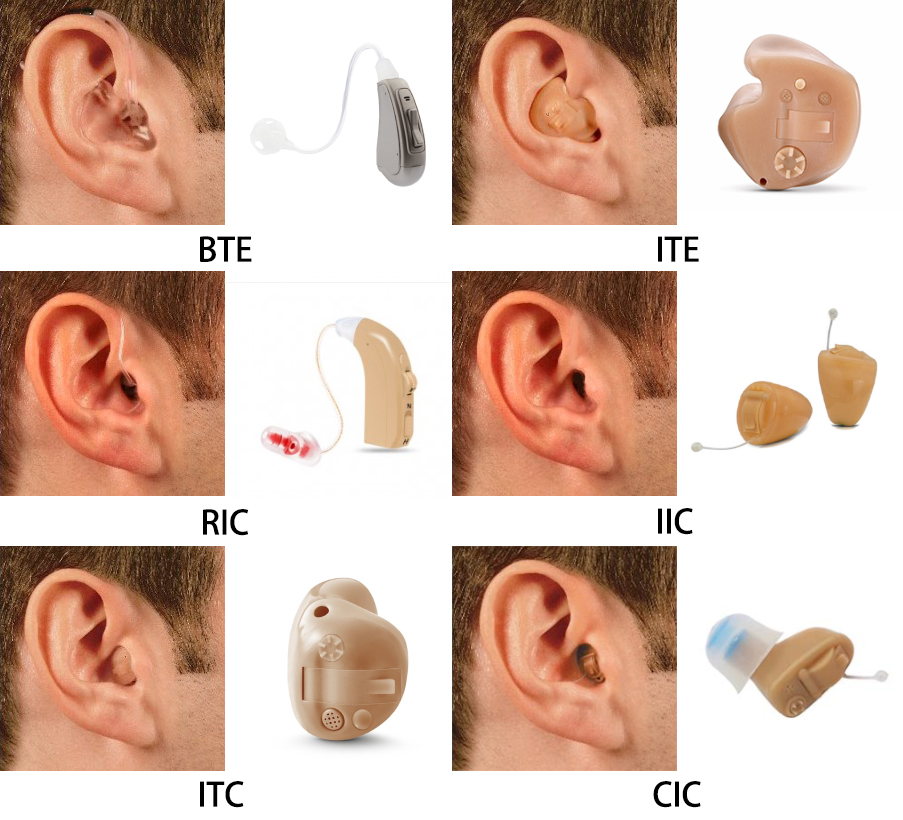Air conduction hearing aids is the most popular product on the market today, and depending on the shape and function can be divided into behind-the-ear (BTE), receiver-in-canel (RIC), in-the-ear (ITE), in-the-canal (ITC), completely-in-canal (CIC), invisible- in-canel (IIC).

behind-the-ear (BTE)
The shape is similar to a banana shape, small and compact. Microphones, amplifiers, batteries and tone adjustment, peak clipping devices and receivers are housed in small boxes of about 4cm in length and 1.5cm in width.
Advantages - They are hung behind the ear and look more beautiful; The power of the ear-back hearing aids is different, so it's considered that is ideal for both deaf children and deaf people. It is also popular because of its high power, small size, low noise, small distortion.
Disadvantages - The microphone is located above and is susceptible to moisture; the function of the auricle gene cannot be utilized; the eardrum is easy to block the ear.
receiver-in-canel (RIC)
Compared with BTE hearing aids, RIC hearing aids are separated from the fuselage by the receiver, which greatly reduces the size of the hearing aid. Usually it is only one-half the size of the traditional BTE hearing aid, which is more concealed, compact and beautiful.
Advantages - The shape is concealed and small; High frequency enhancement improve speech intelligibility; Reduce the effect of blocking ear;
Disadvantages - Like the BTE hearing aid, it lacks the role of the auricle.
completely-in-canal (CIC), in-the-ear (ITE), in-the-canal (ITC), invisible-in-canel (IIC)
It is a kind of invisible hearing aid that is placed directly in the ear canal without any wires or hoses.
Advantages - It is very concealed and light; The microphone is located at the outer ear canal, which is almost the same as the natural receiving sound position of the human ear; The sound is natural, the positioning ability is strong and the auricle function can be utilized to increase the sound collection and positioning.
Disadvantages - The power is not big enough; the manual knob cannot be installed too much, so the operation is troublesome; it is easy to cause the ear to be blocked; the acoustic feedback (howling) is easy to occur; because the machine is placed in the ear canal, it is easily corroded by cockroaches, grease, etc., so the repair rate is high.
category
